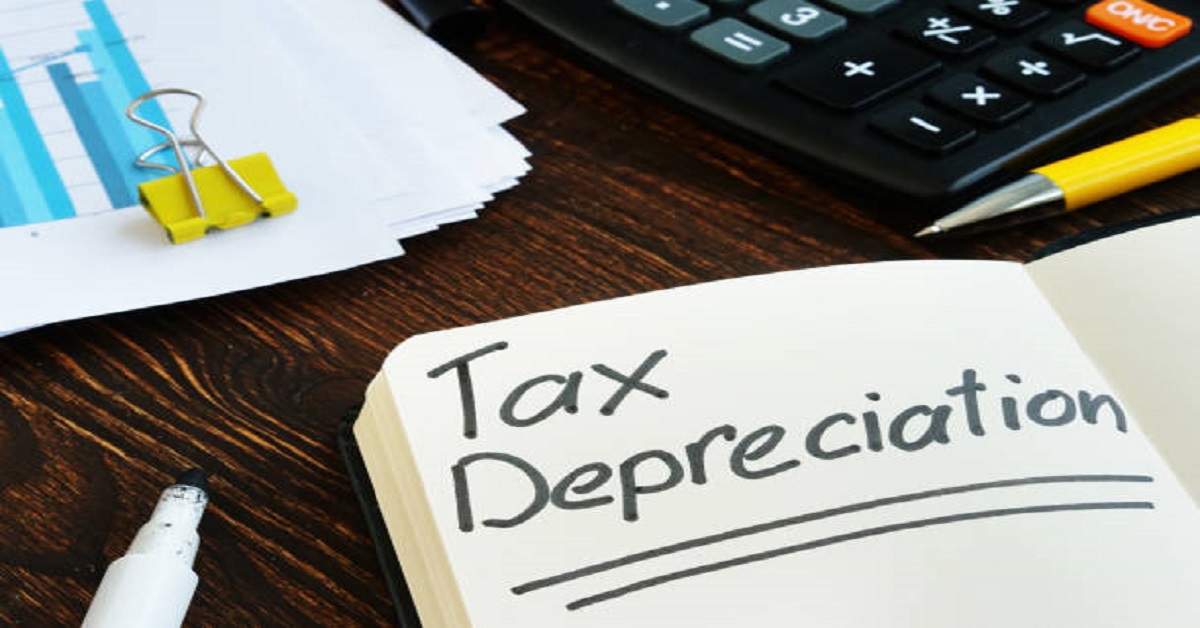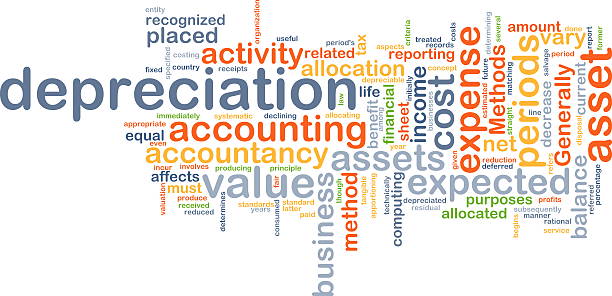
Owning rental property provides ongoing passive income and comes with tax obligations. As a landlord, you want to maximize your returns by reducing your tax burden wherever possible. As a rental property owner, you want to maximize returns by minimizing your tax burden. One of the best ways to achieve this is through using depreciation to reduce taxes.
Depreciation allows you to deduct a portion of your property’s value over time since real estate loses value from wear and tear. In this guide, you’ll learn how to calculate and claim depreciation on your taxes to lower what you owe. We’ll walk through key aspects like creating helpful schedules, choosing the best method, properly documenting everything, and more.
Follow along to understand claiming deductions like a pro and harness the tax benefits of using depreciation on your rental properties.
Depreciation is a tax deduction for investors that allows them to deduct a percentage of a rental property’s value annually based on the useful life allocated by the IRS. For residential real estate, the useful life is 27.5 years. The deduction is calculated based on the value of improvements like the building itself and not the land. In other words, deductions are taken for wear and tear and age, regardless of whether repairs are made.
For example, if you buy a rental property for $300,000, of which $50,000 is the value of the land and $250,000 is the value of the building, you can depreciate the building value over 27.5 years. This means you can deduct $9,091 ($250,000 / 27.5) each year from your taxable income. Consequently, if you are in the 24% tax bracket, this would save you $2,182 in taxes each year.
To claim depreciation deductions, you need to calculate the depreciation amount for each of your rental properties. This involves determining the depreciable basis and useful life of the property. Here are the steps.
You begin by calculating the depreciable basis as the original purchase price minus the land value. The land itself does not depreciate, but you can depreciate the building and any major improvements.
For residential rental buildings specifically, the IRS rules state a useful life of 27.5 years. This means you consider residential rentals to fully depreciate over 27.5 years.
In other words, you exclude land value when determining the depreciable basis, and the useful life set by the IRS determines the number of years over which you can depreciate the property.
You calculate the annual depreciation amount by multiplying the depreciable basis by the percentage rate of 1/27.5 or 3.636%. For example, if you bought a rental property for $280,000 with $80,000 allocated to land value, your depreciable basis would be $200,000. Given the 27.5-year useful life, at a 3.636% annual rate, you could claim a $7,272 depreciation deduction each year.
In short, you determine the annual depreciation deduction by taking the depreciable basis and multiplying it by the applicable percentage rate based on the IRS-designated useful life. Properly documenting your cost basis and useful life is critical for you to claim the maximum eligible depreciation each tax year.
Document your cost basis, land value, and useful life assumptions to back up the depreciation deductions claimed on your taxes. This documentation should include copies of purchase agreements, closing statements, county assessor records, and any appraisals done to allocate purchase price between land and improvements. Furthermore, keep detailed logs of any capital improvements made over time that increase the depreciable basis.
In the event of an audit, sound documentation helps verify the accuracy of the depreciation amounts claimed on your tax returns.
Given the complexities involved, it is prudent to work with a qualified tax accountant when claiming depreciation deductions for rental properties. An experienced accountant can ensure you receive accurate tax treatment and maximize eligible deductions.
Specifically, a knowledgeable tax professional can assist with properly determining the depreciable basis, useful life, land value allocation, and annual deduction amounts. They can also advise on the optimal depreciation method and keep abreast of the latest IRS rules.

The key factors that impact the depreciation amount you can claim include:
You can work with a tax professional to ensure you account for these factors correctly when determining your annual depreciation deductions.
There are several ways to maximize depreciation deductions as a real estate investor. Here are some of the most common and effective strategies:
One way to maximize depreciation is by getting a cost segregation study. This allows you to allocate more of the purchase price to components with shorter useful lives, like appliances or flooring. This increases the depreciation deductions you can take each year.
Investing in newer properties allows you to take larger depreciation deductions. New buildings have not depreciated much yet, so more of the value remains to write off. Older buildings have less depreciable basis remaining.
Any upgrades, renovations, or repairs made that improve or extend the useful life of the property can be depreciated. As you invest in capital improvements, you get an additional depreciable basis to deduct.
In other words, when you make capital improvements to your rental property, you increase the amount that can be depreciated each year. Consequently, strategic renovations and upgrades can result in higher depreciation deductions.
You can accelerate depreciation and take bigger deductions earlier by using alternate MACRS depreciation tables rather than straight-line depreciation. This allows you to front-load your deductions and defer more taxes.
Commercial buildings often have faster depreciation schedules than residential real estate, allowing greater tax deductions. For example, commercial buildings have a 39-year useful life versus 27.5 years for residential buildings.
Special bonus depreciation rules apply to rental properties located in designated opportunity zones. This allows you to deduct 100% of the cost of qualified improvements in the year they are placed in service, rather than spreading them over several years.
In other words, opportunity zone properties provide the benefit of fully expensing qualified improvements upfront, rather than depreciating them over time. This results in much larger tax deductions in the first year for rental property investors.
The passive losses from depreciation can be used to offset any rental income from the same property. After that, remaining passive losses up to $25,000 may be deductible against your W-2 wages or self-employment income if your adjusted gross income (AGI) is below $100,000 and you actively participate in managing your rental property.
In other words, the $25,000 allowance means even investors with W-2 wage income can benefit from depreciation deductions up to the $25,000 threshold. This provides a nice tax break for individuals with income from both employment and rental property investment.
If your passive losses exceed passive income for the year, you can carry forward excess depreciation indefinitely to future tax years until fully utilized. This allows you to save taxes when you have more income or sell your property.
Maximizing the tax benefits of depreciation can get complicated. Working with a qualified tax professional or Certified Public Accountant (CPA) can help you take advantage of every allowable deduction and optimize the depreciation schedule.
Yes. Depreciation reduces the tax basis of an asset over time.
Depreciation decreases profit before tax by allowing a portion of asset costs to be deducted each year.
An example of a tax benefit of depreciation is being able to deduct a portion of a rental property’s value from taxable income annually.
Depreciation is an expense that allocates the cost of an asset over its useful life.
Tax depreciation is the deduction allowed each tax period according to IRS rules, while depreciation more broadly refers to the loss of an asset’s value over time.
Related Article: Active Income vs. Passive Income and Their Tax Implications
In conclusion, using depreciation to reduce your taxes can result in substantial savings as a rental property owner. To maximize your tax deductions, you should focus on strategies like cost segregation studies, acquiring newer properties, making capital improvements, accelerated depreciation schedules, investing in commercial or opportunity zone real estate, offsetting passive income with earned wages, and carrying forward unused losses.
With savvy tax planning around leveraging depreciation deductions, you can save thousands on your annual tax bill. Using depreciation is one of the smartest ways you as a rental property investor can reduce your income tax burden each year.
That said, we’re seasoned multifamily syndicators who specialize in finding quality properties in high-growth markets, and we will be glad to hear from you. Fill the form here to get in touch with us.
More Reads: